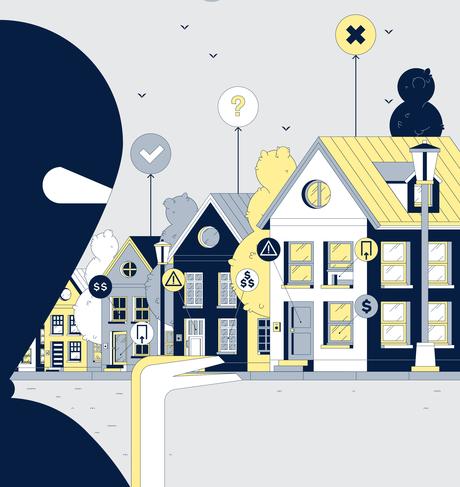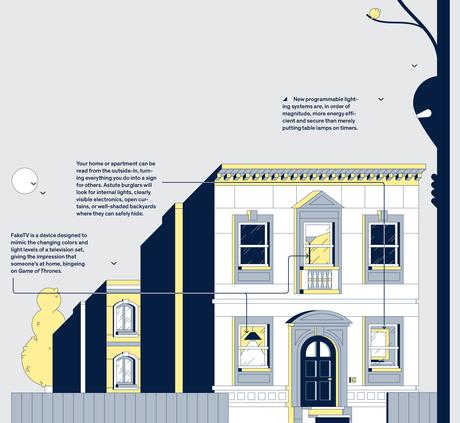
Chris Casey has seen a lot of burglaries. He knows that burglars’ methods are as varied as the types of targets they choose: Someone breaks into the back of your house while an accomplice knocks on the front door to distract you. After you buy gold jewelry from a pawnshop, the store owner notes your address and sends someone to kick in your front door and steal it all back (along with any other valuables they see). A kid is paid $50 a day to raid homes in the distant suburbs, assuming all the risk—and doing all the jail time—for an organized crime ring.
Casey is a detective third grade with the Los Angeles Police Department’s Commercial Crimes Division. He is an energetic and talkative lifetime police officer, approaching his 33rd year of service in the department, with a story for every scenario. You want to know how to rip off a Home Depot? You need to sell some stolen wire at a local metal yard? Casey and his colleagues have seen it all—but they also know ways to stop these crimes.
Protecting yourself from potential burglars can seem intimidating at first, Casey admits, but taking just a few simple steps cuts down on most of the risk. Let’s start at the front of the house. Your doorbell rings, but you’re at the office or away on vacation. How do you know if the visitor is testing to see if your place is empty and thus worth targeting? Casey recommends installing something like the Ring Video Doorbell; using a wide-screen camera attached near your front door, Ring will broadcast live footage of your stoop to your smartphone. You can check who’s standing in front of your house from the other side of the country—and, more importantly, you can talk to them through a small speaker just below the camera, as if you’re standing inside.

Of course, discouraging burglars doesn’t need to be high tech, Casey points out. Consider something as simple as a motion-triggered outdoor light mounted around the side or back of your house; only the most determined criminal is going to stand there in full floodlight, fidgeting with a door lock for all to see. A $40 investment can be the difference between scaring someone away and seeing your home ransacked. Even alarm signs are surprisingly effective, he explains: burglars, more often than not, aren’t rogue electricians from an action film, looking to cut the right wire before the alarm goes off. They see an alarm sign, they move on. It’s about deterrence, Casey emphasizes; you might not even have an alarm, but that’s not the point. The point is to make criminals move up the street or seek out another neighborhood entirely.
So what are burglars looking for? Burglars love sliding glass doors, Casey says, because they are incredibly easy to pop off their runners. On the way back out of your house, a perpetrator can even reinstall the door, and, if nothing appears to have been disturbed inside, you might not know anyone’s been there, making you less likely to call the cops and the criminal more likely to get away. Casey explains that something as simple as a dowel cut to fit the door track can prevent this type of break-in—a remarkably low-tech way to stop a potentially expensive crime.
Take a step back now, and try to look at your house the way a burglar would. Treat your own home—your doors and windows, your garage, backyard, and porch—like a level in a new computer game, and look for spatial weaknesses: the architectural or landscaping opportunities someone might take advantage of to break in. If you have large hedges or a privacy fence blocking certain windows, remember that those exact details could also give shelter to a burglar, who could roam your home freely, invisible from the street. Tree branches can offer a quick route up to a second-floor window—especially because so few people lock windows above the ground floor.

Inside, things become a bit more complex. Keeping lights on in the evening when you’re away is a good idea—unless it’s obvious that they’re on a timer. To address that issue, there are now products designed to mimic someone watching television—such as the aptly named FakeTV—and most “smart home” lighting packages allow programmable lighting routines. What you want to achieve is something criminologists call the “illusion of occupancy,” the appearance that someone is still at home—despite the surreal and wasteful implications of powering lights, fake televisions, and even home stereos without a resident in sight.
As Casey points out, the literature of criminology—even the LAPD’s own website—is full of checklists, featuring detailed advice for concerned homeowners, down to the specifics of where your house is located. If you live on a corner, for example, you are at greater risk of being burglarized, as criminals can watch for police—or returning homeowners—from multiple directions. Even better, a corner home offers the burglar more than one getaway route. Homes on culs-de-sac are less likely to be broken into, on the other hand, precisely because a burglar risks being trapped, with nowhere to run. Neighborhoods designed around tangled street layouts are more crime resistant, some researchers have found, as burglars don’t want to risk getting lost or accidentally doubling back along the leafy streets of an unknown suburb. The implication is, burglars love grids. Ironically, though, Casey adds, these same factors—winding streets, confusing turns, unfamiliar landscapes—can make a neighborhood harder for the police themselves to patrol.
At the end of the day, Casey warns, burglars “just go where the money is.” They’re looking for low-hanging fruit: laptops left out near living room windows or a house with lots of mail piled up at the front door. They’re not sitting around arguing about urban design or the local street layout—they’re looking for quick cash. Checklists are useful but imperfect: The key is to close off enough routes of opportunity that a burglar simply gives up and goes somewhere else. Throw enough obstacles in a burglar’s way, Casey says, and the house always wins.
